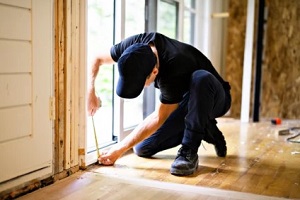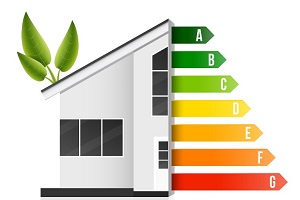 Getting older comes with its own set of joys and challenges. The excitement of visiting with grandchildren or enjoying retirement may come with mobility difficulties. Even leaving the house can become complicated, especially when an older person’s living arrangements are not set up to accommodate their needs.
Getting older comes with its own set of joys and challenges. The excitement of visiting with grandchildren or enjoying retirement may come with mobility difficulties. Even leaving the house can become complicated, especially when an older person’s living arrangements are not set up to accommodate their needs.
Many families struggle to understand how to tackle accessibility problems and home repairs that will make their residences more suitable for elderly family members. The good news is that many national organizations offer assistance for families. Here’s what you need to know to get started.
How Do Home Repair Resources Help Improve Senior Outcomes?
When most people think of home repair for seniors, one of the first things that come to mind is installing a wheelchair ramp. Of course, such adjustments can come in many more forms and broaden a senior’s horizons by improving their mobility and independence.
However, it is critical to remember that many of these repairs can also be implemented to increase the home’s safety and reduce the risk of injury or even death. Pursuing home repairs can prolong the life of your loved one and keep them safer, happier, and healthier over time while also providing them with options for mobility.
The US Department of Agriculture
 Many families do not realize it, but the US Department of Agriculture (USDA) offers programs to low-income elderly residents to help keep their homes safe. The Section 504 Home Repair program provides grants to residents below the cap of the “meager” income limit set by their county. This money is meant to fix home safety hazards that immediately threaten safety.
Many families do not realize it, but the US Department of Agriculture (USDA) offers programs to low-income elderly residents to help keep their homes safe. The Section 504 Home Repair program provides grants to residents below the cap of the “meager” income limit set by their county. This money is meant to fix home safety hazards that immediately threaten safety.
If a resident does not qualify for the grants, the USDA offers a loan program for individuals to modernize their homes. This can include necessary repairs and additions to accommodate the elderly family member’s lifestyle needs. The grant or loan can increase access and the older adult’s mobility.
Medicare and Medicaid
A large portion of the over-65 crowd benefits from either Medicare or Medicaid, depending on their situation. Most people don’t know that in addition to healthcare coverage, these programs can also provide durable medical equipment—some of which goes straight into the home as a residential modification.
If your doctor prescribes it, Medicare or Medicaid will pay for equipment such as wheelchairs, walkers, safety frames/rails for toilets and tubs, or even transfer benches for bathing. These can be essential for living and therefore covered under insurance.
The Local Area Agency on Aging
Your county’s Area Agency on Aging can help you to connect with the resources you need to benefit from local installers and programs for your home. The Older Americans Act sets aside repair funds specifically dedicated for this reason and can offer various desired options.
Other local programs unique to your area may offer grants or additional funding to assist your family in installing the modifications necessary for your loved one to live a fulfilling and safe life. Research online or head to your city hall to ask for further information.
LIHEAP and WAP
Sometimes, a family’s needs for their elderly loved one lie less in movement and travel modifications like wheelchairs and railings and more in climate regulation—keeping the home as warm or as relaxed as needed affordably, which can also increase longevity and comfort.
 LIHEAP (the Low Income Home Energy Assistance Program) and WAP (the Weatherization Assistance Program) are both set up to help seniors pay for improvements to their homes so that they stay warm (or cool) affordably.
LIHEAP (the Low Income Home Energy Assistance Program) and WAP (the Weatherization Assistance Program) are both set up to help seniors pay for improvements to their homes so that they stay warm (or cool) affordably.
LIHEAP can help directly with the cost of energy and home repairs centered on energy usage. WAP allows seniors to upgrade their homes to use power more efficiently and lose less climate-controlled air, resulting in greater comfort and lower costs passed along to the family or older person on a fixed income.
The Rebuild Together Organization
The national nonprofit Rebuild Together runs the gamut of home improvements, offering assistance with various repairs to improve elderly individuals’ lives. They focus on health and safety issues to keep people safe and upgrades and additions that can improve happiness, mobility, and overall quality of life. They can assist in recommending the best options in addition to ensuring proper installation and maintenance.
Need Help? Reach Out to an Assistance Program for Older Adults
Families faced with an aging loved one often do not know where to start when making home modifications. The organizations and resources mentioned above are great places to start looking for ideas and funding.
The experts at SCNOVA can help you identify resources that might benefit your unique situation and understand which changes in your home are the most impactful. Reach out to start the conversation or to get help for your family member. There are options available!
